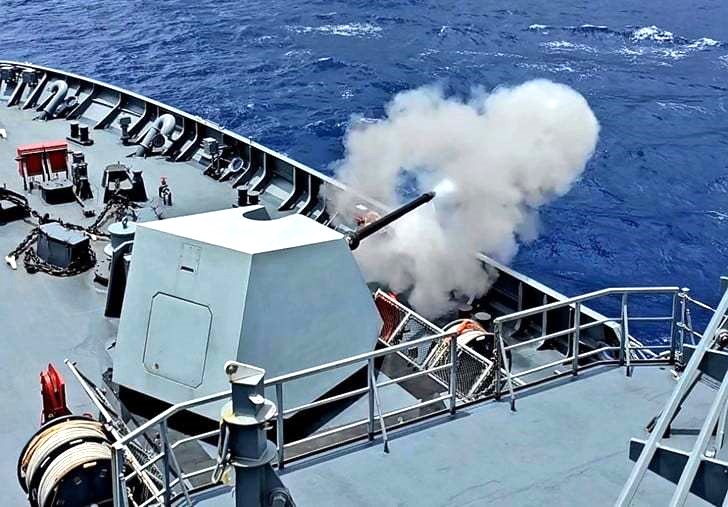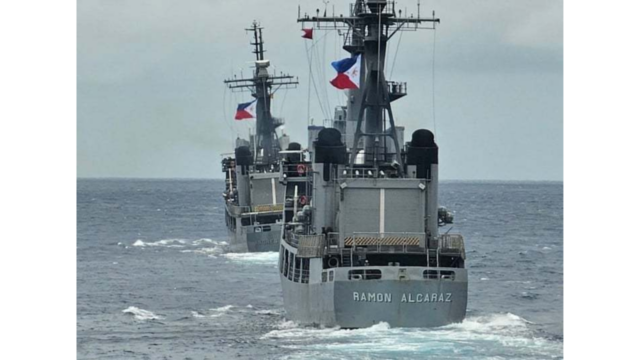SUBIC, Zambales — As Sea Phase of the Philippine Fleet’s unilateral exercise rolled out, the country’s capital ships and systems displayed their modern capabilities in a series of warfare simulations conducted in the waters off Zambales, Bataan, and Mindoro Strait.
Aimed at enhancing operational readiness, promoting interoperability, and encouraging tactical innovation among major surface platforms, frigates BRP Jose Rizal (FF150) and BRP Antonio Luna (FF151), along with patrol ships BRP Ramon Alcaraz (PS16), and BRP Andres Bonifacio (PS17), rendezvoused in the designated area to execute tactical maneuvers, formations, and communications exchanges.
This was followed by anti-air warfare exercise with simulated missile firing featuring the assets of the Naval Air Wing.
Highlight of the first day was the live gun firing exercise showcasing the 76mm gun of FF151, and the 38mm Bushmaster guns of PS16 and PS17. The PS16 also took the opportunity to test fire its Super Rapid Blooming Offboard Chaff (SRBOC) intended to defend the ship against missile attack.

At night, the group conducted Night Steaming in Company (NSIC) while patrolling in tactical formation. They also performed Emission Control Exercise to detect and identify electromagnetic transmissions to build a recognized maritime picture, highlighting all the platforms’ capability in Electronic Warfare.
The Surface Action Group dived deep on the second day, as they simulated Anti-Submarine Warfare Scenario with the NV395 as Maritime Patrol Aircraft and the AW159 Anti-Submarine Warfare Helicopter (NH441) utilizing its onboard dipping sonar to assist in locating and neutralizing the mock submarine target. Representatives from Fleet Operational Readiness Training Evaluation Group (FORTEG) and the Naval Inspector General served as the umpires and evaluators of the said exercise. This kind of naval exercise between ships is a cornerstone of modern maritime strategy, reflecting the complexity and dynamism of naval operations.
More than routine drills, these exercises are essential for ensuring that the fleet, and the navy remain capable, adaptive, and prepared for a wide range of operations.





